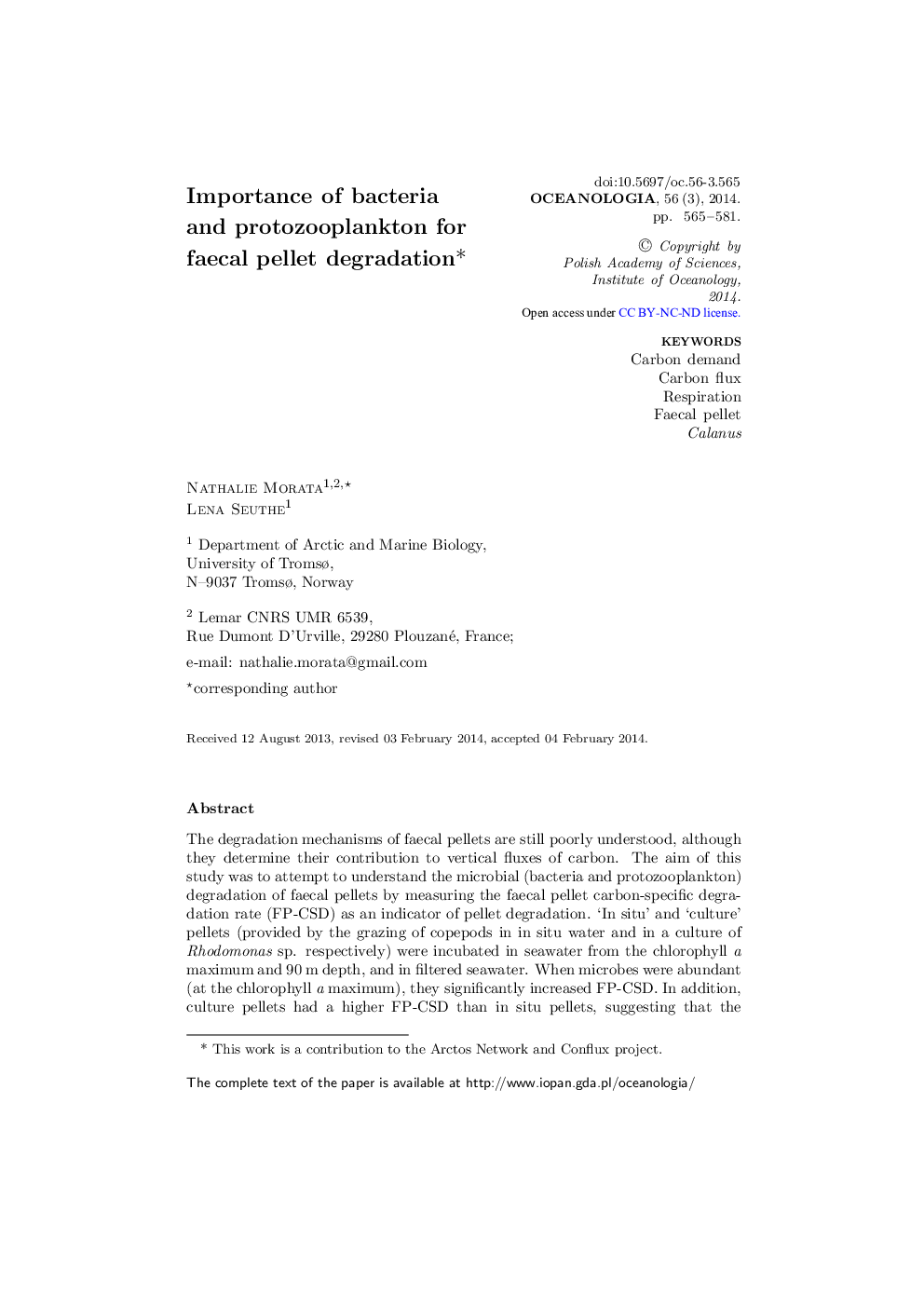| Article ID | Journal | Published Year | Pages | File Type |
|---|---|---|---|---|
| 2069693 | Oceanologia | 2014 | 17 Pages |
The degradation mechanisms of faecal pellets are still poorly understood, although they determine their contribution to vertical fluxes of carbon. The aim of this study was to attempt to understand the microbial (bacteria and protozooplankton) degradation of faecal pellets by measuring the faecal pellet carbon-specific degradation rate (FP-CSD) as an indicator of pellet degradation. ‘In situ’ and ‘culture’ pellets (provided by the grazing of copepods in in situ water and in a culture of Rhodomonas sp. respectively) were incubated in seawater from the chlorophyll a maximum and 90 m depth, and in filtered seawater. When microbes were abundant (at the chlorophyll a maximum), they significantly increased FP-CSD. In addition, culture pellets had a higher FP-CSD than in situ pellets, suggesting that the results obtained with culture pellets should be treated with caution when trying to extrapolate to natural field conditions.
